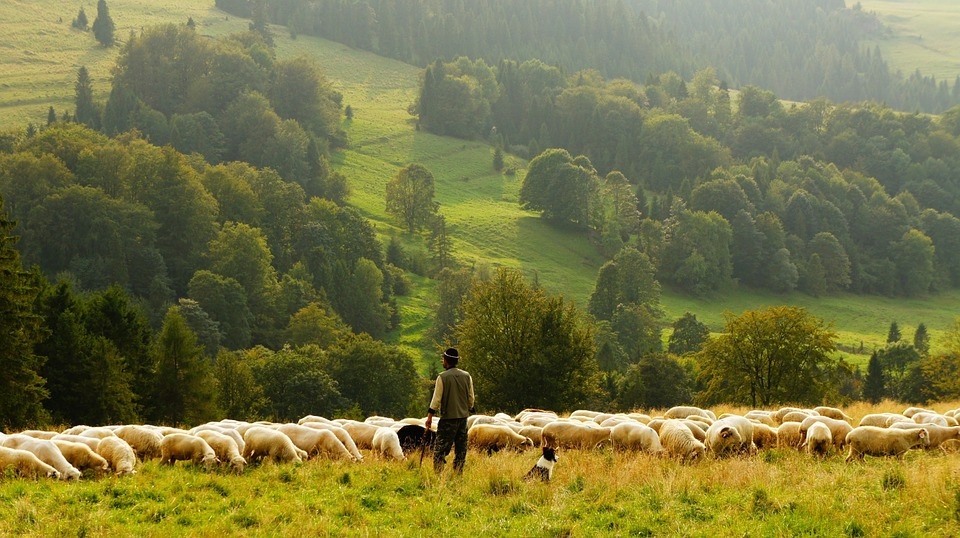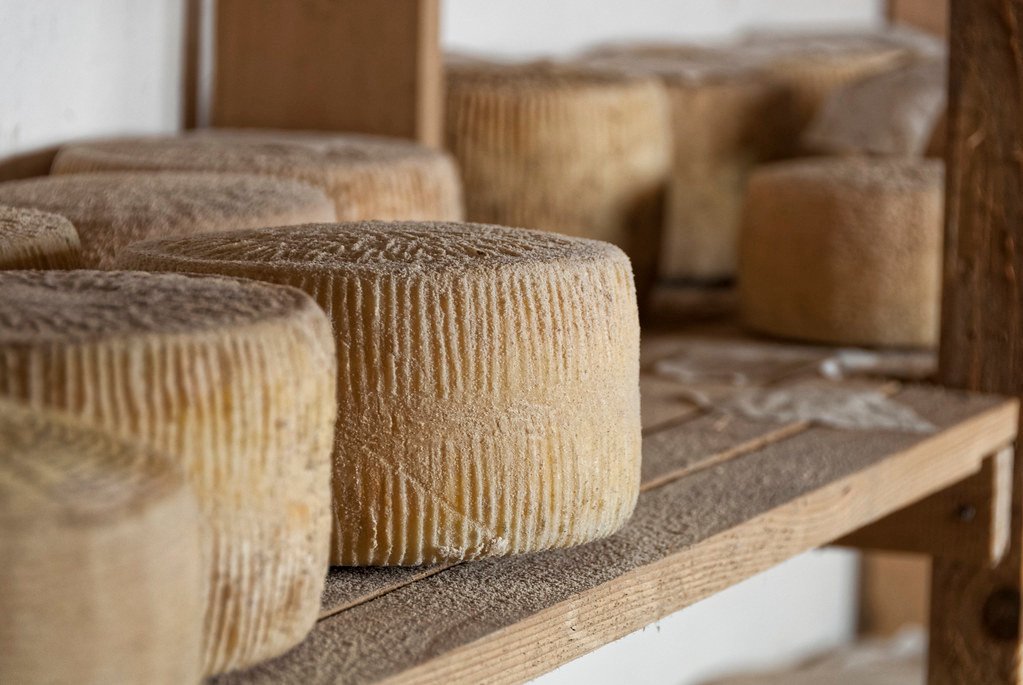Not everyone loves cheeses, though many of us do. It happens often with important flavours. But today, our journey will not only be important: it will be extreme! We are looking for something truly different from the ordinary. And very ancient. Let's discover together, today, a unique Italian cheese: the cheese with worms!
Pure horror... or delicacy?What we are about to present to you today clearly belongs to the family of "dishes born by mistake", together with
gorgonzola. According to some legends, also the
chickpea farinata belongs here. Let’s start with the version of this story as it is told in the beautiful island of Sardinia, although there are similar ones in other parts of Italy. It is said that a form of
pecorino cheese, due to a small crack in its coating, was left at the mercy of dairy flies. And that when it became clear what had happened, it was too late: the larvae had colonized the entire form. The farmer, however, pragmatical as a farmer can be, and attracted by the penetrating aroma, tasted the cheese anyway, and was so enthusiastic that he started producing this
casu marzu, literally
rotten cheese. Ok, I admit it: the thought of biting into a piece of cheese covered with crawling larvae made me turn my face away in disgust the first time I confronted it. But don't be fooled as I was: it's absolutely worth it. Also, as our pragmatic farmer would say: the larvae can be put aside, they don't necessarily have to be eaten! If the tradition behind this cheese has remained alive all these years, there is certainly a reason: its goodness! The unique and intense flavour is a result of the contamination undergone during the aging phase. The initial process is not different from that of a classic-aged
pecorino. The
pasteurized milk is added to the rennet, after which the curd is cooked again and separated from the whey. When the crust begins to form, however, the fate of the
casu marzu moves away from that of the other Sardinian
pecorino cheeses, or from that of most world cheeses for that matter. Small incisions are made on its crust. Then oil or raw milk is added in order to attract flies. Finally, the form, placed in a dark and airy environment, is left to the action of the dairy flies, which will lay their eggs inside. In the following weeks, the larvae released from the eggs will begin to eat the cheese and enriching the cheese paste thanks to their enzymes. After about 3 months, the cheese obtained is a unique one, with a creamy consistency, loved by the most experienced palates because of its pungent flavour and its penetrating aroma. Our advice is to break a generous piece of Sardidian
pane carasau, the typical thin and crunchy bread found throughout the island, and sprinkle it with
casu marzu. You will not regret it!
 From a clandestine product to a protected trademark
From a clandestine product to a protected trademark
His fame is now international. This is due not only to its undeniable extravagance but also to the fact that it has been the object of many talks and legal disputes. The point is that – not surprisingly – the production of this cheese is illegal according to European health regulations. And it is extreme not only for regulators. In 2009 for instance, the
casu marzu was mentioned in the Guinness Book of Records as the most dangerous cheese in the world, despite the fact that there are no scientific studies that prove it. This has certainly helped the cheese with worms to be known all over the world, prompting many to explore the Sardinian hinterland in search of this curious product that could not be found in shops... The cheese became to be known as a precious and rare gem for cheese connoisseurs. So precious that the Sardinia region has decided, to the detriment of European regulations, to insert the
casu marzu in the
national IGP register, in order to safeguard this exceptional product and its silent peasant production that has been going on since time immemorial. In a strange limbo between legality and illegality, today its production is partly allowed thanks to a scrupulous processing that follows strict health guidelines; however, large-scale sales are prohibited.
Well, some of my Sardinian friends argue that the true, traditional Sardinian cheese with worms is not the one produced in the aseptic conditions required by today's strict sanitation standards. They offer a safe product, but according to the elders, the good, dear and old bacteria helped the fermentation of the cheese and gave a taste that is now almost lost. If your curiosity is at least as great as your appetite, know that to taste the original
casu you need to be lucky enough to know a shepherd who produces it privately and illegally. And, of course, we are not inviting you to go against the law.
 Rotten cheese… how many are there?
Rotten cheese… how many are there?While the Sardinian
casu marzu is for sure the most famous of all the "
cheeses with worms". However, this ancient tradition is much more widespread in Italy than one might think. In fact, there are numerous similar products in other regions: sometimes almost forgotten, sometimes thrivingly alive among farmers, always with a unique flavour and inestimable cultural and historical value. Here is a list of some of them:
• In
Puglia there’s the
frmag punt (pointed cheese, a reference to the holes made with a pointed instrument to let the flies in)
• In
Calabria there’s the
casu du quagghiu (untranslatable)
• In
Abruzzo there are the
cacio marcetto and the
u cace fraceche, perhaps the most similar to the Sardinian one. This particular spreadable
pecorino is found only in the Abruzzo hinterland, in the territories surrounding the Gran Sasso mountain
• In
Liguria it is given the strange name of
gorgonzola coi grilli (literally
gorgonzola with crickets), where by crickets we mean the small larvae that – we forgot to mention it - can somehow jump
• In the territories of
Piacenza there is the
furmai nis cui saltarei, directly from a form of grana-parmesan which, if for some reason did not ripen in the right way, was reused to produce
furmai nis • Also
Friuli region [LINK articolo EN72] has one, called
salterello (litterally “jumpy”), the legal production being fuond only in the province of
Udine.
Each of these examples has its own history and peculiarities, but they all share a form of love for some of the more extravagant traditions of the past. Extravagance I said? Well, I may be wrong. This is an ancient and very tasty tradition, rooted in a frugal past where anything that could be reused would be. A tradition that – if we look carefully, we find also beyond Italy. Beside
Corsica, that is culturally much close to Italy, and where you can find the variant called
casgiu merzu, there are also cheeses modified not by larvae but by mites in
Germany - the
milbenkase - and in
France, the
mimolette.
I have tasted and appreciated them all. I am of the opinion - and I know that I am a bit biased - that the most intense (and tastiest) are the Sardinian
casu marzu and the Abruzzo cheese
marcetto.
So… what are you waiting for?

